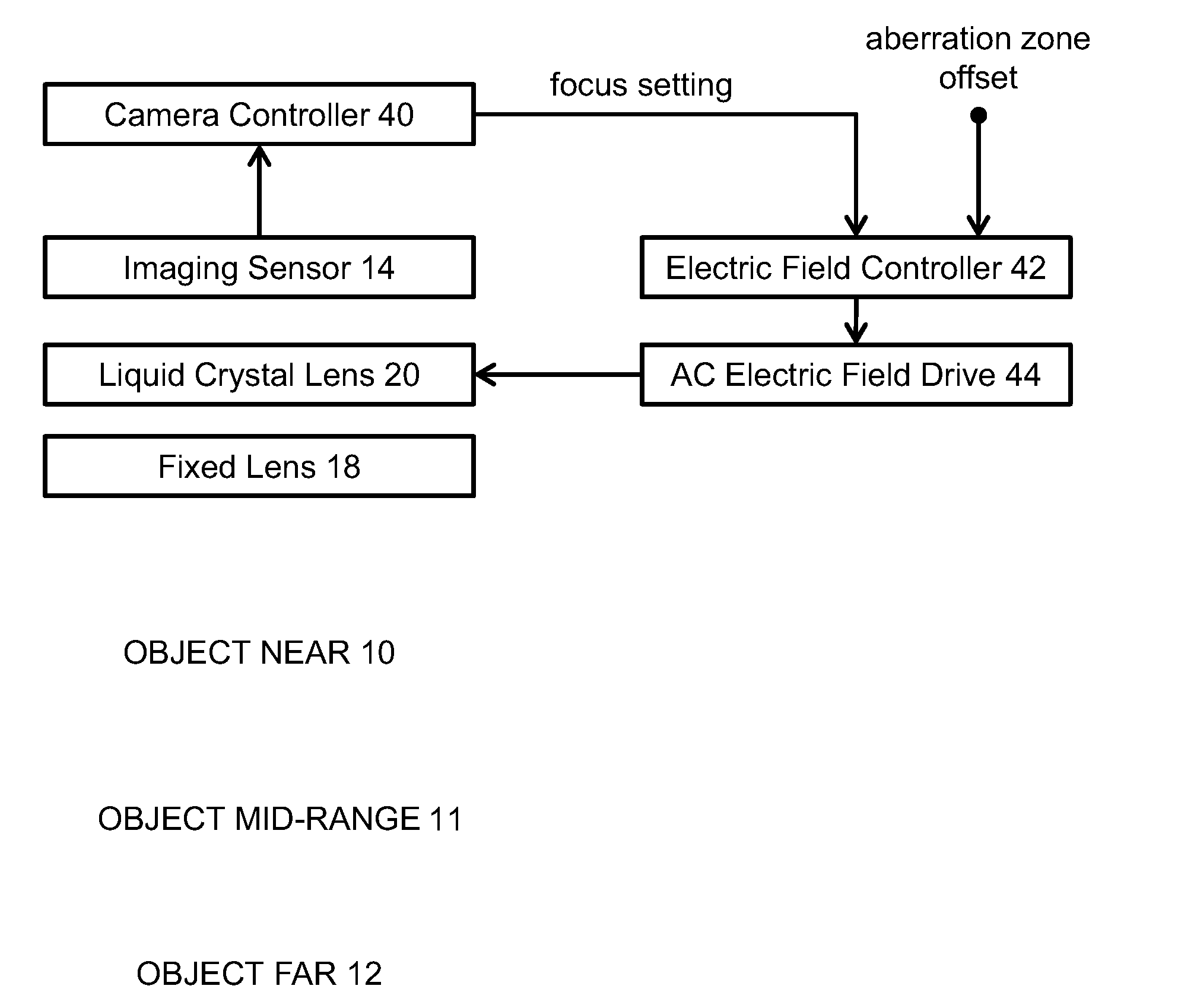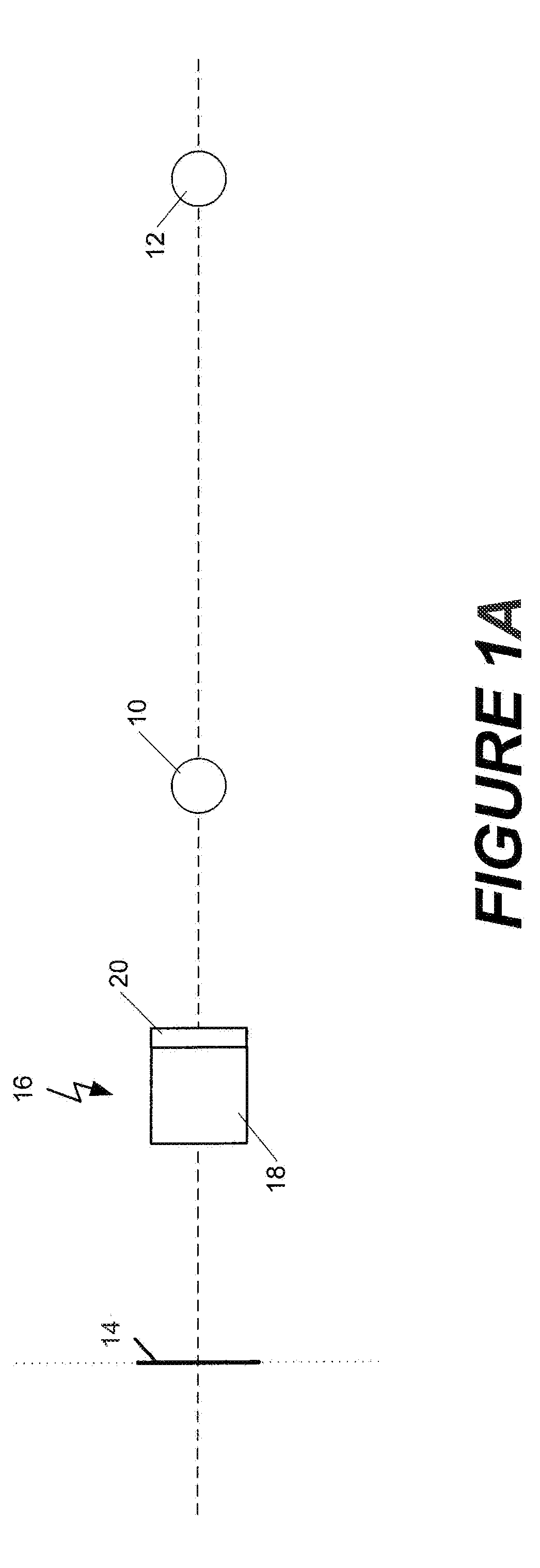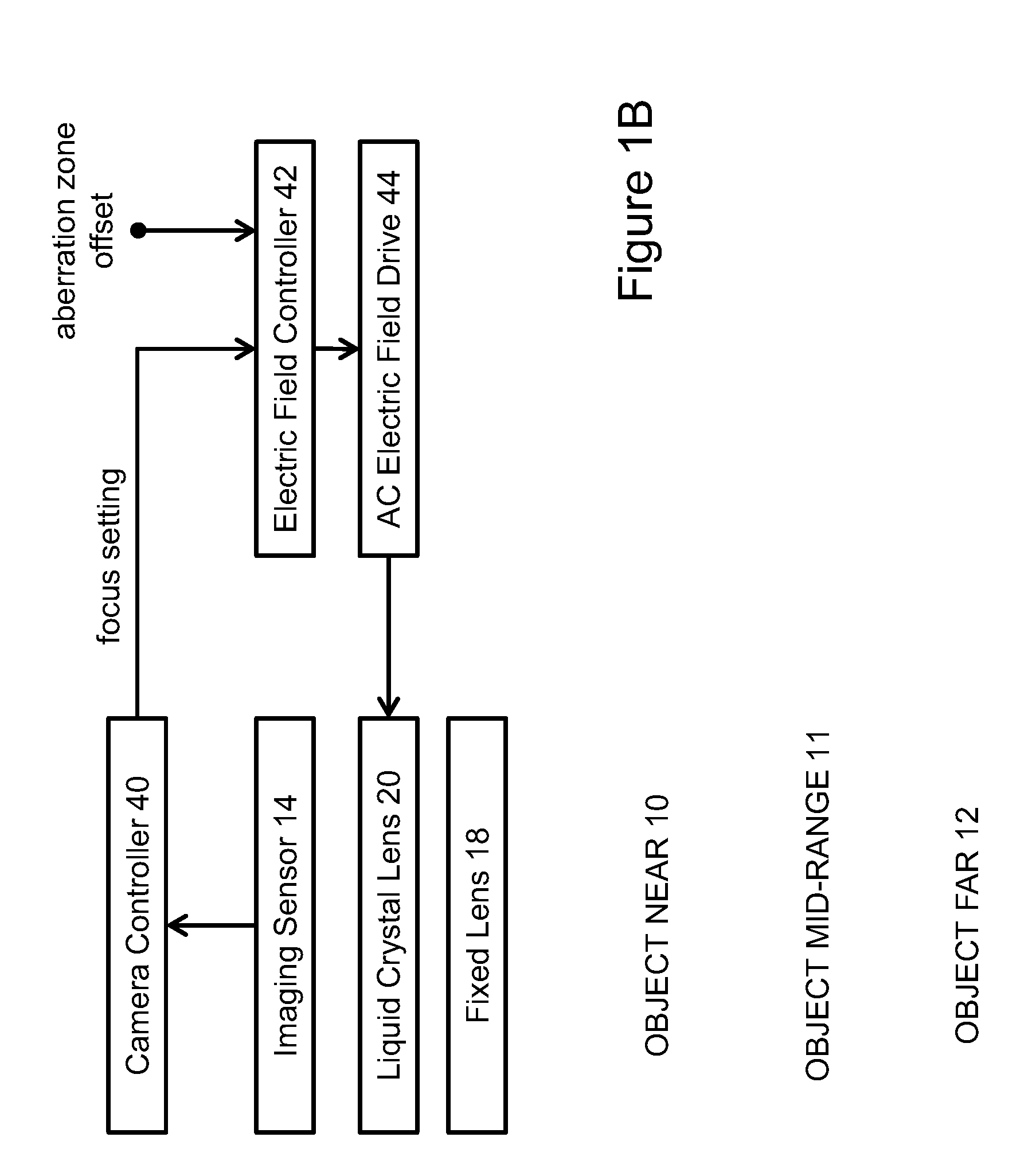Tunable liquid lens with reduced aberration
a liquid lens and aberration technology, applied in the field of liquid crystal lenses, can solve the problems of significant aberration and scattering drop, inconsistent optical properties of many tunable liquid crystal optical devices, and aberration inducing image distortion, so as to reduce the
- Summary
- Abstract
- Description
- Claims
- Application Information
AI Technical Summary
Benefits of technology
Problems solved by technology
Method used
Image
Examples
Embodiment Construction
[0018]FIGS. 1A and 1B depict schematically a tunable imaging system using a tunable lens 16. Two or three objects to be imaged are shown in the figures, a “near” object 10 and a “far” object 12, in addition to a “mid-range” object 11. A two-dimensional image sensor (e.g., a photodetector) 14 is positioned at a fixed plane so as to capture the image formed by lens 16. The lens includes a fixed lens assembly 18 and a tunable liquid crystal (LC) lens 20. For a mobile telephone or laptop computer application, the assembly may be quite compact with the image sensor 14 and the liquid crystal and fixed lens assembly being about 5 millimeters thick. The LC lens is voltage-controlled and, in response to voltage changes which alter the electric field across the LC structure, the refractive index of the LC lens changes.
[0019]A camera controller 40 sets a desired focus value, and an electric field controller 42 determines a suitable control voltage value corresponding to the focus value. The co...
PUM
| Property | Measurement | Unit |
|---|---|---|
| thick | aaaaa | aaaaa |
| optical power | aaaaa | aaaaa |
| electric field | aaaaa | aaaaa |
Abstract
Description
Claims
Application Information
 Login to View More
Login to View More - R&D
- Intellectual Property
- Life Sciences
- Materials
- Tech Scout
- Unparalleled Data Quality
- Higher Quality Content
- 60% Fewer Hallucinations
Browse by: Latest US Patents, China's latest patents, Technical Efficacy Thesaurus, Application Domain, Technology Topic, Popular Technical Reports.
© 2025 PatSnap. All rights reserved.Legal|Privacy policy|Modern Slavery Act Transparency Statement|Sitemap|About US| Contact US: help@patsnap.com



